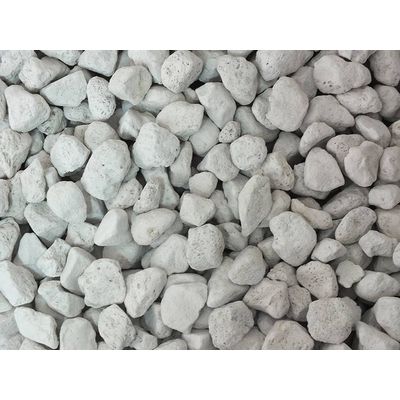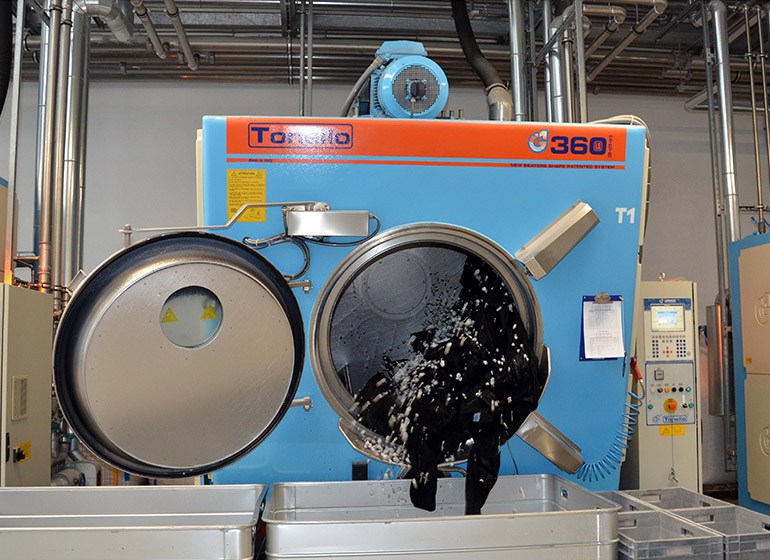This lesson includes the dry and wet processes which are often used in Garment to create and aged look.
Garment Wet Processing
- Rinse wash
- Stone Wash
- Enzyme wash
- Bleach wash
- Bag/Tie Wash
- Softener
Rinse Wash
Stone Wash
In the stone wash process, the garments are abraded with the help of stones. This wash enhances the grainline of the garment with mechanical abrasion. The stones are used with garments with ratio of 1 : 1.5 (75 kg stones for 50 kg load size). The grainline of garments is enhanced by the rubbing of garments with the help of stone. The stone type used are polymeric stones called pumice stones

Pumice Stone used in stone wash (Picture)

Garments are offloaded after a stonewash (Picture)
After the stonewash procedure, the garments are loaded into the machine where these stones are removed from finished garments. This process is called derocking.Effects of Stone Washing Time
- Stones may cause wear and tear of the fabric and may damage the washing machine from abrasion of the stone with fabric or machinery parts.
- It may also create the problem of environmental disposition of waste of the grit produced by the stones.
- Increase the labour cost required to remove stone dust from finished garments. Denim garments are required to be washed several times for complete removal of the stones.
- The stone washing process may cause back staining and redeposition.
- The process is nonselective.
- Metal buttons and rivets in the garments, as well as the drum of the washing machine some-times, get abraded which substantially reduces the quality of the garment and the life of the equipment. [R.Paul]
Enzyme Wash
In enzyme washing, cellulase enzymes are used. Hydrolysis of the cellulose, which is catalysed by cellulase, causes the surface fibres to become weakened and later they get removed when there is either fabric-to-fabric abrasion or fabric-to-stone abrasion during washing.
Advantages
Cellulase is economical and environmentally friendly as compared with stone washing using pumice stones. The percentage of fabric damages is reduced with cellulase treatment. The enzymatic treatment of denim fabric ensures the same result but consumes less water and time, resulting in less waste and damage to machines. The pollution, quality variability and imperfections are also reduced in enzymatic treatment. [R.Paul]
- Enzymes can be recycled.
- The productivity of washing is increased due to the space formerly taken up by the pumice stones; the same washing machines can handle more jeans.
- The time consumption for removing stone fragments from the denim garments is eliminated in the case of cellulase treatment.
- The duration or number of rinse washing after enzyme treatment is less than pumice stone washing.
- A small quantity of enzyme can replace several kilograms of pumice stones during washing, which ultimately leads to less damage to garments and machines.
- Washed garments with a softer feel and better appearance is achieved in cellulase treatment.
Bleach Wash
Softener
Process Flow
The process flow of garment processing varies as per the requirements of garment appearance. The garment dry processing and garment wet processing are bot carried in combination with one another to create the desired results. Considering the high volume of garment processing factories. These processes has to be exactly planned to avoid bottlenecks and ensure a smooth process flow. An example of a stone was process flow a jeans is shown below.
Example of Garment Processing with Stone Wash for a Jeans
